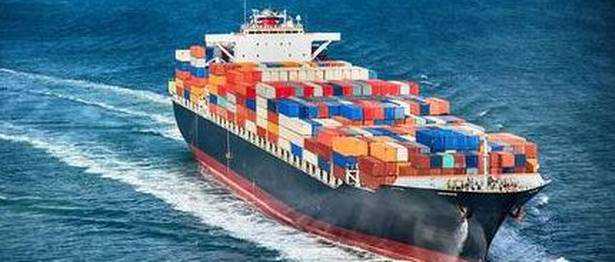India Bangladesh coastal shipping pact may be thrown open to larger ships

Image collected
Stipulation on using RSVs of 6,000 GT likely to be lifted
India is seeking to remove the size restriction on vessels plying between India and Bangladesh under the coastal shipping agreement signed between the two neighbours in June 2015 as the pact comes up for renewal next year.
The coastal shipping pact currently permits vessels of up to 6,000 gross tonnage (GT) to ply due to size restrictions mandated by the River-Sea Vessel (RSV) rules framed separately by India’s Directorate General of Shipping and the Department of Shipping, Bangladesh. This is because, Article II of the pact, signed on June 6, 2015, covers only Indian and Bangladeshi flag vessels that comply with RSV or equivalent standards to run services between the two countries.
The RSV category was agreed upon by both the countries because of its lower construction and operation costs without compromising on the safety of the vessel.
India’s Shipping Ministry now feels that “the restriction on vessel size should be dictated by the route itself and not separately by tonnage”. For instance, ships operating between Chennai and Chittagong, commercially provide cost effective service deploying larger ships.
Currently, there is no restriction for vessels complying with international standards to trade between India and Bangladesh. However, the coastal shipping agreement permits lower standard only to trade between the two countries.
The size and standard restrictions are only for the protocol routes mentioned in the coastal shipping pact, says V K Singh, Managing Director, Shreyas Shipping & Logistics Ltd.
Exporters and importers, he said, “get confused” that any ship operating between India and Bangladesh should be of 6,000 GT only. “That is not correct”, he said.
“The two governments have imposed the 6,000 GT restriction only on protocol routes as larger ships cannot ply on these routes that cover mostly rivers. But, that does not forbid foreign-going vessels or Indian vessels from carrying cargo between an Indian port and a Bangladesh port on a normal route in international waters. That has nothing to do with protocol routes,” Singh said.
Shipping industry sources said that “a service between Chennai and Chittagong doesn’t require smaller vessels to be deployed”.
“Why should we operate with a smaller vessel on that lane; it can be operated by a larger vessel. Agreed, it is not a protocol route, but if you include it under the protocol route and still have a restriction, then we will have to follow the size restriction and standard specified under the agreement,” an industry source said.
“What is the need for putting restrictions on larger vessels in such cases; it will not be economical to use smaller GT vessels. Larger vessels are always preferred if there is volume. Why should there be a restriction; let that restriction go,” he said, adding that “otherwise, we will operate as a normal foreign-going vessel”.
The agreement will run till June 2020 but is currently under review, before it is extended for a further five years.
“The issue of allowing foreign-going vessels of larger GT (without restriction) holding relevant safety certificates to operate between the seaports of the two countries in addition to RSVs also can be negotiated so that the benefits of priority berthing and tariff can be extended to such vessels,” a Shipping Ministry official said.
Ships operating under the agreement will be charged port dues and other levies as applicable to local vessels of the respective countries solely plying on domestic routes, which are lower than the rates collected from foreign-going ships. They also get priority berthing.
“If we include vessels of any size which meet international standards into the agreement, it will benefit the shipping industry as more vessels will be able to operate under the agreement,” the official said.
India has also asked Bangladesh to include movement of third country export-import (EXIM) cargo under the agreement by permitting transhipment through ports located on India’s Eastern coast.
It also wants Dhamra Port, V.O. Chidambaranar Port Trust (formerly Tuticorin Port Trust) and Kamarajar Port Ltd to be included as ports of call under the agreement.
Source: https://www.thehindubusinessline.com
Tags :
Previous Story
- Air India flight delayed for three hours by...
- The people who travel with tour groups, by...
- Prana Air launches Pocket Monitor for PM2.5 levels
- Bangladesh, Bhutan, India, Nepal MVA to benefit four...
- GDP growth tops 26 countries
- Pakistan garment makers chase rivals in India and...
- Once termed a basket case, Bangladesh is now...
- TikTok parent ByteDance plans to set up data...